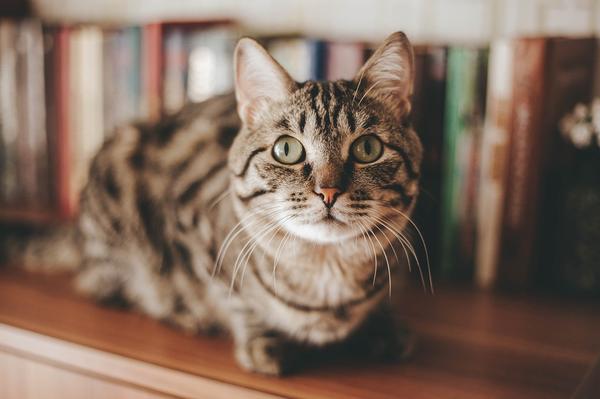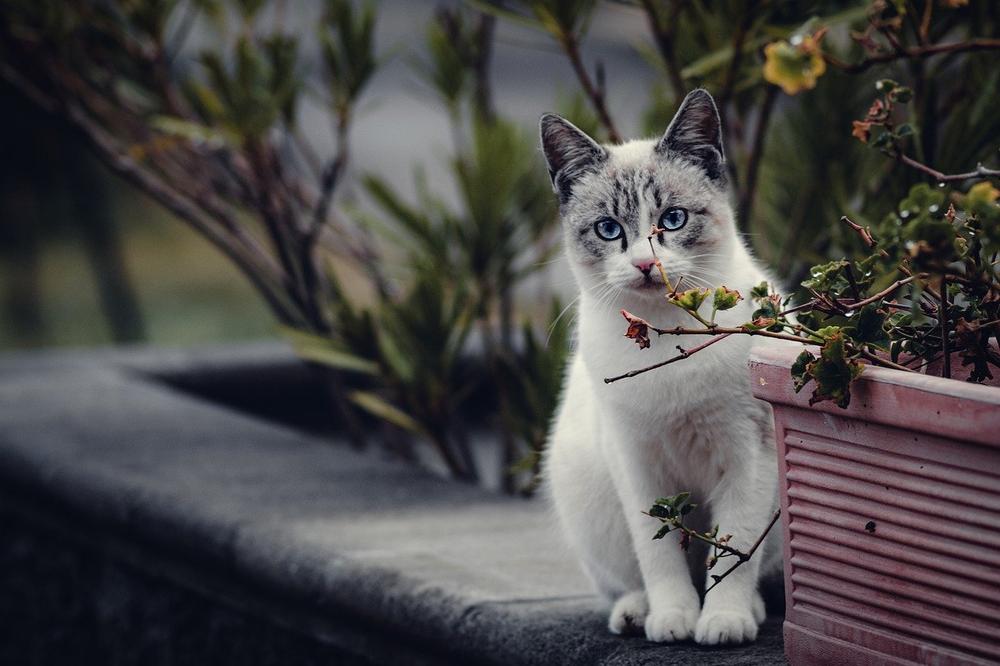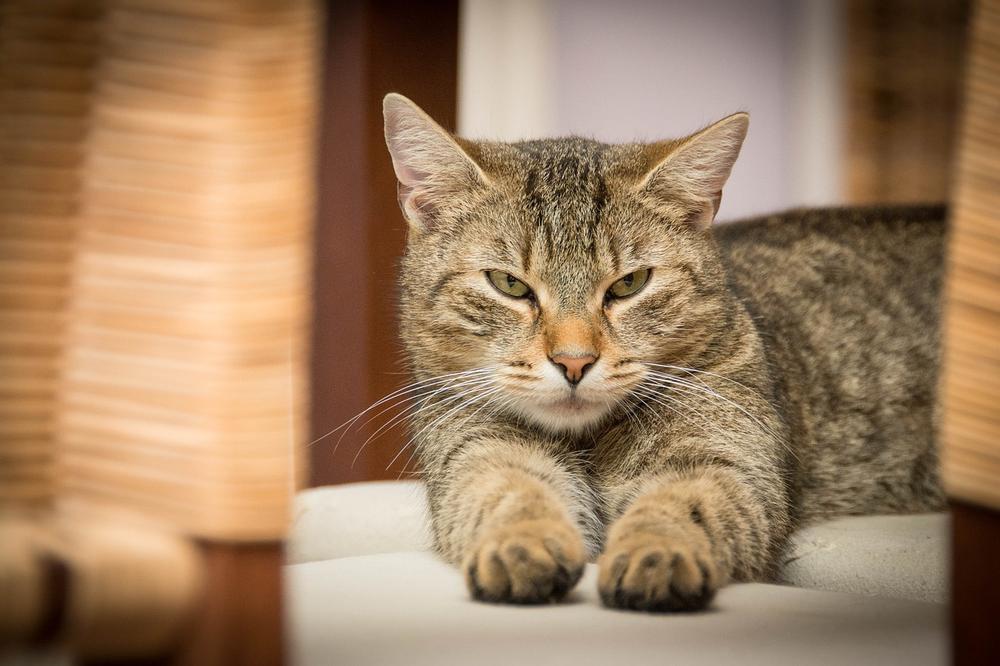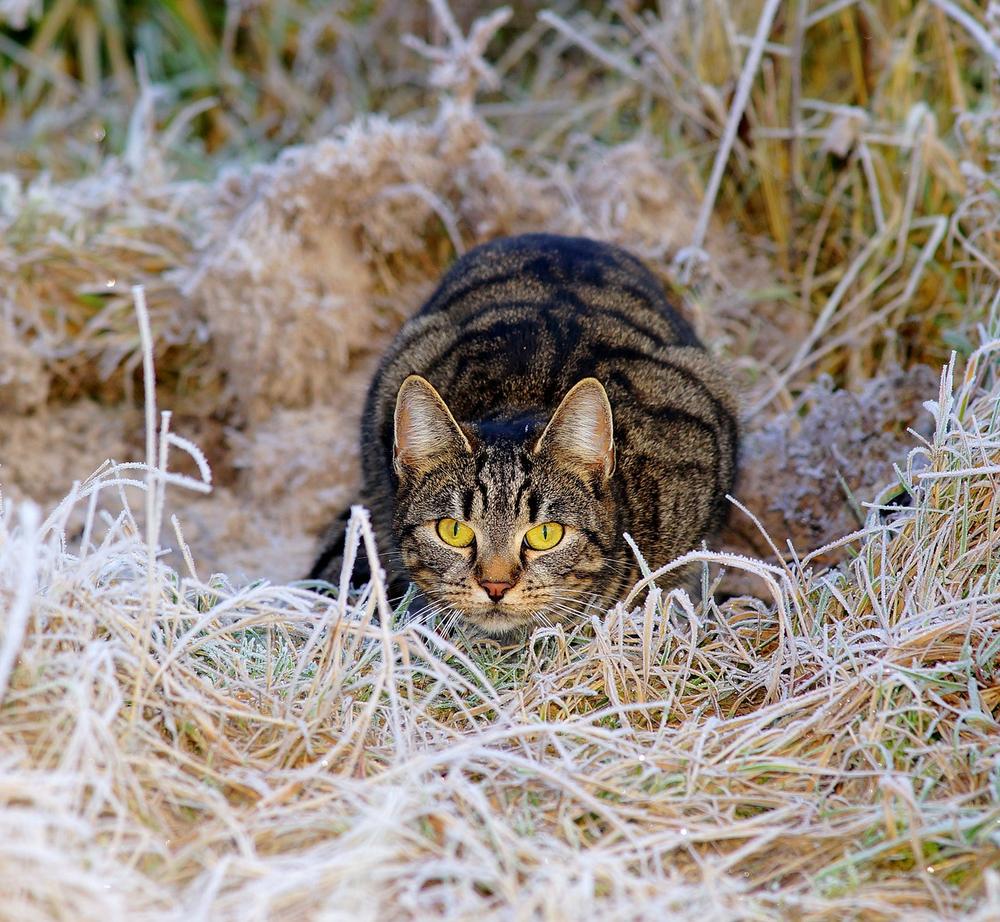My Cat Is Not Eating: Is Force Feeding Your Cat Advisable?

Attention, cat lovers...
Your furry friend is refusing to eat and you're panicking. 😟
Your poor cat could be wasting away, and that's not what you signed up for.
But worry not, because today's got you covered.
We're diving into the world of force feeding your cat, and trust me, it's not as scary as it sounds.
Ready to save your buddy?
Let's jump in!
What Is Force Feeding?
Force feeding is essential for severely undernourished cats
Force feeding becomes a lifeline for severely undernourished cats, helping them recover from serious health complications.
When a cat is malnourished and lacks critical nutrients, their immune system weakens, increasing the risk of infections and diseases. They also experience muscle wasting and organ dysfunction, which can be life-threatening. That's where force feeding comes in to save the day!
By ensuring that these cats receive the necessary calories, force feeding helps prevent further health deterioration and potential complications. It provides them with the fuel they desperately need to bounce back.
How does force feeding work?
Now, you may wonder how force feeding actually works.

Well, it's pretty simple!
You'll need a syringe or feeding tube and a specialized high-calorie formula recommended by your vet. With force feeding, you deliver the food directly into your cat's mouth (NOT "straight down its throat").
You have to remember that force feeding should only be done under the guidance of a veterinarian.
They will show you the proper technique, making sure the process is stress-free and safe for your furry friend.
Tips for successful force feeding
If you find yourself in a position where you need to force feed your cat, here are some tips to ensure success:
- Choose a quiet and comfortable space for feeding.
- Be patient and gentle, allowing your cat to eat at its own pace.
- Use positive reinforcement, like praising and rewarding your cat afterward.
- Monitor your cat's progress and regularly consult with your vet to adjust the feeding plan if needed.
With force feeding, you can help rescue severely undernourished cats and assist them in regaining their health. Remember, this shouldn't be a long-term solution, but a temporary measure to support their recovery.
What Else Can I Do to Force-Feed the Cat?
Here's how you can encourage your cat to eat willingly and avoid force-feeding:
- Give them different options for food, like feeding them by hand or using small rolls of food.
- Remember that cats may have many reasons for not feeling hungry, such as infections, illnesses, vaccinations, new things, psychological problems, anorexia, dental issues, heart disease, stress, anxiety, or changes in their surroundings.
- If your cat refuses to eat, get them to the vet right away because it could mean they have underlying health problems.
- Ask your vet about appetite stimulants that don't involve force-feeding to help increase your cat's desire to eat.
- Once a sick cat starts eating on their own, stop force-feeding them.
- Make sure to treat conditions like arthritis that might affect your cat's ability to eat comfortably.
- Emotional support is crucial for your cat when they're unwell.
- Talk to your vet about using feeding tubes or syringe feeding, which are safer and more efficient ways to give your cat nutrition.
- Treat any nausea your cat may have to help stimulate their appetite.
- Only use appetite stimulants that your vet recommends.
- Offer your cat highly tasty food options to entice them to eat.
- When introducing a new cat to one you already have, be careful and prepare properly.
By adhering to these instructions, you will guarantee your feline receives proper nourishment without the need for coercive feeding techniques. 😺
And for those of you who are concerned about the safety of your cats, I have written a helpful article.
In my blog post, "Is Dracaena Toxic to Cats," you can find all the information you need before bringing a dracaena plant into your home.
It's essential to ensure a safe environment for your beloved feline friends.
Explore the potential risks here.
Feeding Techniques for Reluctant Kittens and Resistant Cats
Don't worry, feeding reluctant kittens and resistant cats can be tricky. But you'll get through it!
Here are some effective ways to entice them to eat:
- You can try force-feeding by using meal balls or a syringe. Just make sure you're careful not to choke them.
- If the kittens were separated from their mothers early on, they might need initial force-feeding. But don't worry, eventually, they'll figure out how to eat on their own.
- Start by making a soupy gruel with A/D mixed with water. Gradually reduce the water as the kitten gets better at eating.
- Giving smaller food volumes more frequently might be easier for them to handle than force-feeding.
- If the resistance is intense, talk to a veterinarian about feeding tube options.
- It's important to take safety precautions during force-feeding. Handle them gently to prevent choking, and use a towel to keep them still if needed.
- Your vet might recommend prescribed medications to help with nausea.
- Make sure you provide them with a proper cat diet that's high in protein and fat.
- Split their meals into at least two portions, spaced four hours apart.
Every cat is different, so adjust your feeding techniques to meet their individual needs.
But what if your cat's lack of appetite persists despite trying force-feeding techniques?
Well, it's time to explore alternative approaches to encourage your furry friend to eat.
In the next section, I'll share some tips and tricks on how to create a comfortable environment for meal times and address potential underlying causes for a reduced appetite.
Trust me, you don't want to miss out on these simple yet effective strategies that can make a world of difference for both you and your feline companion!
How to Gently Encourage Eating
When it comes to encouraging eating in cats, there are some gentle tactics you can try.
Here are a few ideas:
- Create a calm and quiet environment during meal times to reduce stress and anxiety.
- Offer small portions of food, supplements, or treats to entice their appetite.
- Comfort your cat with treats or flavoring their water to make eating more appealing.
- Rule out any potential illnesses that might be causing the reduced appetite.
- Maintaining good dental health year-round is important for overall well-being.
So instead of force-feeding, focus on creating a positive eating experience for your furry friend. By implementing these techniques, you can help ensure your cat gets the nutrition they need without causing unnecessary stress.
To give you the gist: Further down the blog post, I'll be discussing an important topic about whether or not to force-feed a dying cat. So keep reading to get all the information you need to make the best decision for your beloved furry friend.
How to Force-Feed a Cat a Pill?
You can try a few techniques to force-feed your cat a pill, here they are:
- Hide the pill in a treat.
- Use special pill pockets made for hiding pills.
- Crush the pill and mix it with a little wet food.
- Get advice from your vet on how to force-feed properly.
- Be careful and gentle when giving the medication.
Forcing a cat to take a pill can stress both you and your furry friend.

If you're struggling or facing resistance, don't hesitate to seek professional help or tools that can make the process easier.
Your cat's health and well-being should always be your top priority.
The Ideal Approach to Force Feeding a Cat with Kidney Failure
When you're force feeding a cat with kidney failure, there are certain precautions you need to take.
Here's what you can do:
- Talk to your vet or a veterinary nutritionist about it.
- Come up with a diet plan that suits your cat's specific needs.
- If necessary, consider giving your cat a liquid diet.
- Make sure you give the medication exactly as prescribed.
- Regularly check your cat's weight and overall condition.
- Create a calm and stress-free environment for feeding.
- Use gentle techniques so it's not uncomfortable for your cat.
- Offer small meals multiple times during the day.
- Always have fresh water available for your cat.
- Remember to be patient and understanding throughout the feeding process.
Every cat is different, so what works for one may not work for another. That's why consulting with a professional will be your best bet when it comes to force feeding a cat with kidney failure. 💪

But wait, before you embark on force feeding your cat with kidney failure, there's something critical you need to know.
It may come as a surprise, but forcefeeding a dying cat is strongly discouraged, as it can cause distress and worsen their all in all quality of life during the final stages.
So what should you do instead?
Let me enlighten you further in the next section...
Should I Force-Feed My Dying Cat?
Force-feeding a dying cat is not the way to go. Doing so can cause distress and make their end-of-life experience even more challenging.
Instead, you should refrain from force-feeding altogether, as it only exacerbates their condition.
During the final stages of a cat's life, maximizing comfort and minimizing stress should be your priority.
Encouraging natural eating behaviors, providing small, appetizing meals, and ensuring access to fresh water are better options.
Being gentle, compassionate, and understanding in these difficult times is what matters most for your beloved feline friend.
The Risks of Force Feeding
First, to be safe, talk to a vet before resorting to force feeding.

Only go for it if nothing else works.
Here are the 10 risks you need to be aware of when force feeding:
- You might end up overfeeding your cat.
- Force feeding often leads to weight gain.
- Overfeeding can cause various health issues.
- Cats who don't eat for more than two days risk liver failure.
- For your cat's survival, aggressive nutrition and hydration are crucial.
- Remember that dental care is something pets usually miss out on.
- Sadly, only a third of owned cats get preventive dental healthcare.
- Be on the lookout for a dangerous tapeworm called Echinococcus multilocularis.
- Obesity in pets results in poor health.
- Both you and your cat can experience physical and psychological stress from force feeding.
Instead of force feeding, consider using short-term assistance for cats not eating due to illness or recovering from a medical procedure.
For a long-term solution, feeding tubes are the better option.
Final Thoughts on Cat Force-Feeding Techniques
Key Takeaways:
- Loss of appetite in cats can be caused by various factors.
- Immediate veterinary attention is crucial if a cat stops eating.
- Prescription appetite stimulants can help increase a cat's appetite.
- Force-feeding should be discontinued once a sick cat shows signs of improvement.
- Emotional support and treatment for underlying conditions are important during a cat's illness.
- Feeding tubes provide a safer and more efficient means of ensuring adequate nutrition.
- There are alternatives to force feeding, such as treating nausea and using highly palatable food.
- Feeding techniques for reluctant kittens and resistant cats should be done with caution.
- Safety measures should be taken while force-feeding to prevent choking.
- Proper cat nutrition involves a high protein and fat diet divided into multiple meals.
- Ruling out underlying illnesses is important if a cat has a reduced appetite.
- Comforting methods, small portions, and flavoring water can entice a cat to eat.
- Be careful when force-feeding a pill to a cat and seek guidance if needed.
- Proper medication and diet plans are important for cats with medical conditions.
- Do not force-feed a dying cat as it can worsen their condition.
And that wraps up today's article.
So you made it to the end of my blog post! Now I really want to know, did you enjoy reading it? I put so much effort into making these blog posts as detailed and helpful as possible. It takes up a good amount of time (in a positive way), so it would mean so much to me if you could just click on any of the social sharing icons to share this post with others. Thank you so much!
Talk soon,
-Sarah Davis